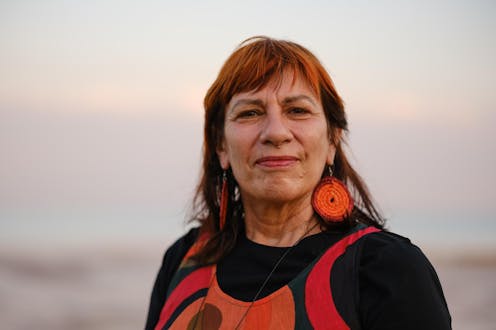Ali Cobby Eckermann's She is the Earth is unlike any other book in Australian literature
- Written by Aidan Coleman, Senior Lecturer, English and Creative Writing, Southern Cross University

By any objective measure – publications, sales, recognition – the literature of First Nations peoples in Australia is undergoing a resurgence. At the forefront in poetry has been Yankunytjatjara poet, Ali Cobby Eckermann. Magabala Books, the Broome-based independent Aboriginal publisher of Eckermann’s latest book She is the Earth, has also played a large part in this revival.
Review: She is the Earth – Ali Cobby Eckermann (Magabala Books)
In a story that has become literary legend, Eckermann was living in a caravan on unemployment benefits when she heard in 2017 that she had won the international Windham-Campbell Prize. She was only the second Australian to win this prestigious award, following Helen Garner, and the first author from any Indigenous group in the world to receive this honour.
Forcibly removed from her family, as one of the stolen generation, she was raised by adoptive parents on Ngadjuri country in South Australia’s mid north. While her parents were loving, her childhood was filled with trauma. Eckermann endured sexual abuse, schoolyard racism and feelings of alienation. Later, while living in the Australian Outback, she was a victim of domestic violence. She was pressured to give up her child for adoption.
Throughout her life, Eckermann was curious about her Aboriginal heritage. The final chapters of her memoir see her, in her mid-30s, reconnect with her mother and discover her Aboriginal kin. Around this time, she also reunited with her 18-year-old son. These details are helpful in understanding She is the Earth.
Author identity
The New Critics who were ascendant in postwar Anglo-American literary criticism recommended approaching a literary work as a watertight container that would admit no additional information in its interpretation. A reader was to be guided by the text alone; authors, and their intentions, were irrelevant.
The literary theories that gained traction from the 1960s, which gave us concepts such as Roland Barthes’ “death of the author” and Michel Foucault’s “author function”, did not overturn these conventions.





